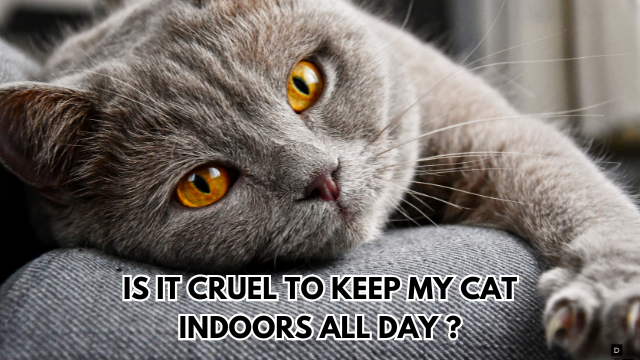Did you know that nearly 79% of pet owners decorate for the holidays with their furry friends in mind? The holiday season is all about creating a magical atmosphere, but if you’re a cat parent, you know your curious feline might turn that festive decor into their personal playground. While many opt for fake Christmas trees as a safer, more eco-friendly alternative to real ones, the big question remains: Are fake Christmas trees safe for cats?
Let’s explore whether your faux tree can coexist peacefully with your furry companion, potential risks, and how to make your holiday decor cat-friendly.
- Why Do Cats Love Christmas Trees?
- Are Fake Christmas Trees Safe for Cats?
- Tips to Make Fake Christmas Trees Safer for Cats
- Signs Your Cat May Be in Trouble
- Are Fake Christmas Trees Safer Than Real Ones?
- Bonus Tip
Why Do Cats Love Christmas Trees?
If you’ve ever caught your cat scaling the branches of your tree or batting at ornaments, you’ve probably wondered, Why can’t they leave it alone?
According to PetMD, cats are naturally drawn to tall, vertical structures because they mimic trees in the wild that provide safety and vantage points.
Add shiny, dangling ornaments, and your tree becomes the ultimate playground.
Fake trees are particularly tempting because of their soft, flexible branches.
Cats might mistake them for toys or even chew on them, potentially causing some concerns.
Are Fake Christmas Trees Safe for Cats?
The short answer is: It depends. While fake trees eliminate the risk of toxic sap or needles found in some real trees, they still pose their own set of hazards. Here are some potential risks:
1. Chewing on Plastic Branches
Cats love to chew, and fake trees are no exception. The branches and needles are usually made of PVC (polyvinyl chloride) or other plastics. If ingested, these materials can cause gastrointestinal issues, including blockages.
According to The Humane Society, even small pieces of plastic can lead to vomiting or diarrhea. Keep an eye out for signs of illness if your cat is a notorious chewer.
2. Climbing Hazards
Fake trees might not be as sturdy as their real counterparts, especially if they’re lightweight.
A determined climber could easily topple the tree, risking injury to themselves and damage to your home.
To minimize this risk, opt for a tree with a stable base and anchor it to the wall or ceiling if possible.
3. Tinsel and Decorations
While not specific to fake trees, tinsel, garlands, and ornaments often go hand-in-hand with holiday trees.
These shiny items are irresistible to cats but can be extremely dangerous if swallowed.
According to ASPCA Pet Insurance, tinsel can cause severe intestinal blockages, requiring surgery in some cases.

Tips to Make Fake Christmas Trees Safer for Cats
You don’t have to skip the tree entirely! With a few precautions, you can enjoy a festive tree without constant worry.
1. Choose a Cat-Friendly Tree
When shopping for a fake tree, look for one made from non-toxic materials. Many retailers now offer pet-safe trees designed with minimal shedding and durable branches.
2. Secure the Tree
A sturdy tree base is essential. Consider using fishing line to anchor the tree to a nearby wall or ceiling to prevent tipping. If your cat is a climber, placing the tree in a corner can also reduce access.
3. Skip the Tinsel
While it adds sparkle, tinsel is a known hazard for cats. Opt for safer alternatives like fabric garlands or ribbon.
4. Keep Decorations High
Place ornaments and other tempting items higher up on the tree, out of your cat’s reach. Use unbreakable ornaments and secure them tightly to the branches.
5. Block Access
If your cat is particularly persistent, consider placing the tree in a room they can’t access or using a pet playpen around the base of the tree.
What About the Lights?
Lights are another popular feature of Christmas trees, but they can be problematic for cats. Chewing on electrical cords can lead to serious injuries or even electrocution.
To keep your cat safe:
- Use cord protectors or tape cords securely to the wall.
- Unplug the lights when you’re not around to supervise.
- Choose LED lights, which emit less heat and are safer for curious paws.
Signs Your Cat May Be in Trouble
Even with precautions, accidents can happen. Watch for these warning signs if you suspect your cat has gotten into something they shouldn’t have:
- Vomiting or diarrhea
- Loss of appetite
- Lethargy
- Coughing or gagging (potential choking)
If your cat shows any of these symptoms, contact your veterinarian immediately.
Are Fake Christmas Trees Safer Than Real Ones?
It’s a trade-off. Real trees have their own risks, including toxic sap, sharp needles, and potential exposure to pesticides. Fake trees eliminate those dangers but come with their own set of challenges.
According to The Spruce Pets, a well-secured fake tree with thoughtful decoration is often the safer choice for households with cats.

Bonus Tip: Create a Cat-Friendly Holiday Zone
If your cat just can’t resist the allure of the tree, consider setting up a holiday zone just for them.
Place a small cat tree nearby and decorate it with cat-safe toys and a sprinkle of catnip. This gives your feline a festive space of their own and may help divert their attention from the main tree.
Read: Purr-Fectly Hilarious: 50 Funny And Heartwarming
Merry Christmas Wishes For Cat Lovers
Fake Christmas trees can be safe for cats, but only if you take a few extra steps to cat-proof your holiday setup.
By securing the tree, choosing non-toxic decorations, and being mindful of your cat’s behavior, you can enjoy a beautiful, festive home without sacrificing your furry friend’s safety.
Remember, the holidays are all about creating joy—for both you and your pets.
So, take some time to cat-proof your decorations and make the season a little brighter for everyone!***
Watch Videos about Cat & Kitten Care on Youtube @naowthecat